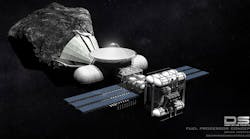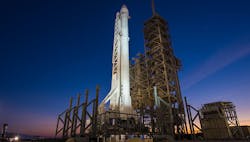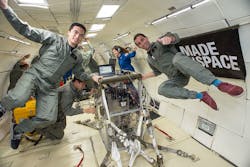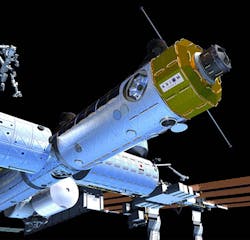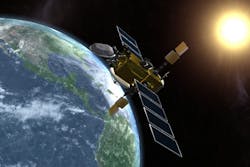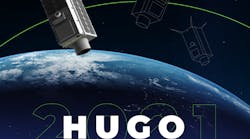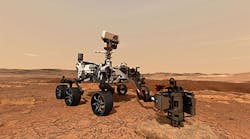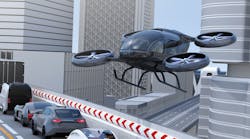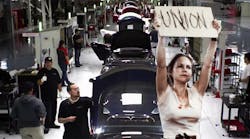Latest from Industry Trends
“We want to be the people leading this next boom, this next revolution,” says Andrew Rush, the CEO and president of Made In Space Inc. “We don't want other folks to lead it. We want to be out in front. As Americans, we have a huge desire to explore and innovate. I don’t think there is any more innovative place with an opportunity to explore than space.”
After President John F. Kennedy announced in May 1961 the national goal of sending a man to the moon before the end of the decade, a large portion of the nation’s scientific and technical community was galvanized by the dream of space flight. Incredibly, what had occurred only in the realm of science fiction became a reality just eight years later when Neil Armstrong and Buzz Aldrin landed their Apollo 11 lunar module on the moon’s surface.
In a few years, the lure of manned space flight dimmed and soon our government’s ambitions were scaled back from the moon to the International Space Station orbiting the earth. In constant 2014 dollars, NASA funding fell from $43.5 billion in 1966 to just $15.3 billion 10 years later. The agency currently has a budget of approximately $18 billion.
But recently, it has been the private sector that has once again energized our ambitions for moving beyond our planet. A new breed of entrepreneurs, backed in many cases by government resources, is making space flight the stuff of which dreams – and a lucrative reality – are made. In the process, they are creating advanced manufacturing jobs as they develop production capabilities and supply chains. A 2014 Bureau of Labor Statistics report found that the U.S. space industrial base employed 2.6 million people and that employment at commercial companies had grown by 10.3% from 2009 to 2012.
No one has played a more significant role in this transformation than Elon Musk, who started the Space Exploration Technologies Corp., or as it is more commonly known, SpaceX, in 2002. The company has more than 5,000 employees and suppliers in all 50 states.
Space X is best known for its innovations in space flights commissioned to deliver satellites into orbit and resupply missions to the International Space Station. In 2010, SpaceX made history as a private company when it returned a Dragon spacecraft from low-earth orbit. In April 2014, the company was able to land the first stage of a Falcon 9 rocket in the Atlantic Ocean. Then in December 2015, the company flew a Falcon 9 rocket to earth orbit, where it delivered 11 communications satellites, and then landed the first stage on land.
Most recently, SpaceX successfully reused a Falcon 9 first stage rocket to send a satellite into space and then landed the booster rocket on a drone ship stationed in the Atlantic Ocean.
The March 30 mission was hugely important because the standardization of rocket technology and its reuse of the rocket booster are essential to Musk’s plans to reduce the cost of space travel. SpaceX estimates that by reusing booster rockets it can reduce the cost of a supply voyage to the ISS by 30%, which would take it from $61.2 million to around $40 million.
Musk’s ambitions go far beyond reducing the cost of flights to position satellites in earth’s orbit. In February, SpaceX announced that the company had been contracted by two private individuals to fly them around the moon, a flight scheduled for late 2018. Space X plans to use its new Falcon Heavy rocket.
Last September, Musk announced the Interplanetary Transport System, a reusable rocket and spacecraft combination designed to deliver 100 or more people to Mars.
Musk is far from alone in his space ambitions. We spoke with a number of space entrepreneurs to learn about their innovative firms and views on the space market.
Made In Space, Inc.
“We don’t want to go on camping trips in space anymore,” says Andrew Rush, the president of Made In Space (MIS). “We want to go on long, sustainable missions that ultimately settle it.” Doing that, he explains, requires the ability to manufacture products in space. And since 2014, when Made In Space’s first 3D printer was installed on the International Space Station, that is just what the company has been doing.
MIS had originally hoped to purchase an off-the-shelf 3D printer, make some minor modifications and send it to the ISS to produce parts. That wasn’t to be the case.
“It turns out that if you take a commercial 3D printer and put it into microgravity, it makes a bird’s nest,” Rush said. After much development and testing, the company was able to solve two key technical challenges – control the positioning of all the materials in the 3D process to tight tolerances and control the heat produced by the printing process. MIS also had to make sure that the 3D printer could be safely operated in the ISS, which serves as the astronauts’ home as well as their workplace in space. “That meant we had to develop an environmental control system that could capture and control the volatile and other noxious materials that are produced during the 3D printing process,” Rush says.
In April 2016, MIS sent the first commercial printer to ISS. This second-generation printer has produced 39 prints, ranging from an adaptor for an oxygen generating system used aboard the ISS during monthly oxygen level testing to a finger splint design for a medical researcher.
MIS is also preparing for much larger production in space. The company is testing a system that will produce ZBLAN optical fiber. When manufactured in space, this fiber will provide a faster response time and wider transmission windows for communication lines than a similar product produced on Earth. MIS plans to produce the fiber in space, bring it back to Earth and sell it for applications such as long-haul communication cables.
Axiom Space
The International Space Station plays a critical role in the plans of Made In Space and many other companies. For them, 2024 is a critical date, because ISS is scheduled to be decommissioned that year. Axiom Space intends to fill at least part of that gap.
The Houston-based company plans not only to build a privately owned successor to ISS but also to train astronauts and tourists for space flights. The company will begin sending astronauts to ISS in 2019. In 2020, it will send the first commercial module of the new space station to space to join up with ISS.
“Through 2024, we will send up the rest of our modules and when ISS is retired, we separate off as a separate station,” explains Amir Blachman, Axiom’s vice president of strategic development. “All throughout that period, manufacturing in space in all its permutations will grow and grow.”
The Axiom space station will be smaller than the ISS, but because it is being built for commercial customers, it will offer a larger manufacturing area. Blachman says it will also provide increased communication bandwidth and be able to handle a ceramic furnace. Axiom also expects to use SpaceX and Boeing to provide more flights to the space station. That will allow customers to move materials and products back and forth to the station on a more timely basis, Blachman notes.
Blachman said the largest group of customers for the space station initially will be other nations that want to send astronauts to space.
“We are talking about 20 different countries that want to send astronauts to space instead of the much narrower ISS group which is four countries plus the EU,” he says.
Accion Systems
Advances in electronics have allowed us to shrink all manner of products, from telephones to computers. That broad swath of miniaturized products also includes satellites. Given the huge cost to send large payloads into space, the attraction of equally capable smaller satellites is readily apparent.
Accion Systems CEO Natalya Bailey was working in the space propulsion lab at MIT on a new type of ion engine that was ideal for these smaller satellites. Accion’s ion engine differs from traditional ion engines in that it uses a liquid propellant that can generate a very small-scale ion beam.
“A standard ion engine is the size of a golf cart,” says Bailey. “We can build our smallest ion engine to be the size of a pack of gum and then we can scale it from there.”
Accion also decided that it would use standard manufacturing machines and processes where possible to produce its engines, rather than deal with the time and expense associated with customized tooling.
While the CubeSat form factor has received much attention in recent years, Bailey says there is some shifting toward somewhat larger 100 to 150-kilogram satellites. She said Accion is developing its engine in accord with that shift.
“We expect to fly our first system as part of the qualification program at the end of the year and in production shortly after that.
Accion’s early customers are primarily large space companies such as Lockheed, Boeing, and Orbital Sciences. Bailey said they have “deep pockets to try out some pretty risky technology and they make great partners if we run into problems or need some advanced technology equipment.” She anticipates that future customers will include the government and other commercial space companies.
York Space Systems
When it comes to building spacecraft, the model has been more Rolls-Royce than Ford or Chevy.
“Satellites today are boutique, customized things where they are designed from mission to mission. They are redesigned every time,” says Dirk Wallinger, co-founder and CEO of York Space Systems.
York’s aim, Wallinger explains, is to produce a spacecraft bus—the satellite structure, its electrical power subsystem, navigation command, and communications uplink and downlink—as “an industrial-grade, standardized product utilizing advanced manufacturing techniques with low overhead costs. It enables us to deliver that product at a price point an order of magnitude below any other competitor.”
The company is aiming its product at a middle ground between small CubeSat satellites with limited functionality and expensive government satellites. The company describes this product as a “universally applicable, moderately capable, satellite.”
By building a spacecraft bus in a standardized fashion and reducing cost, Wallinger says, York is able to “remove barriers to entry to new customers” and increase the number of companies that can operate products in space.
York is entering the production phase of its S-class platform and expects to have the platform take its inaugural flight in late 2017. Wallinger notes that the spacecraft bus was designed from the start to be mass-produced in a highly automated fashion.
While the original space race of the Cold War is long over, some industry observers believe there is a high-stakes commercial space race developing. Many refer to data as “the new oil,” says York’s Wallinger, and space is the key to harvesting this data. The commercial side of the space industry is still developing and Wallinger says it is critical for the U.S. to develop the advanced manufacturing technology that this expanding market for data will require.
“If we wait too long and those capabilities are developed in other countries, we are going to be in a bad spot and we are going to lose a lot of those jobs that could have been U.S. jobs here,” Wallinger warns.










